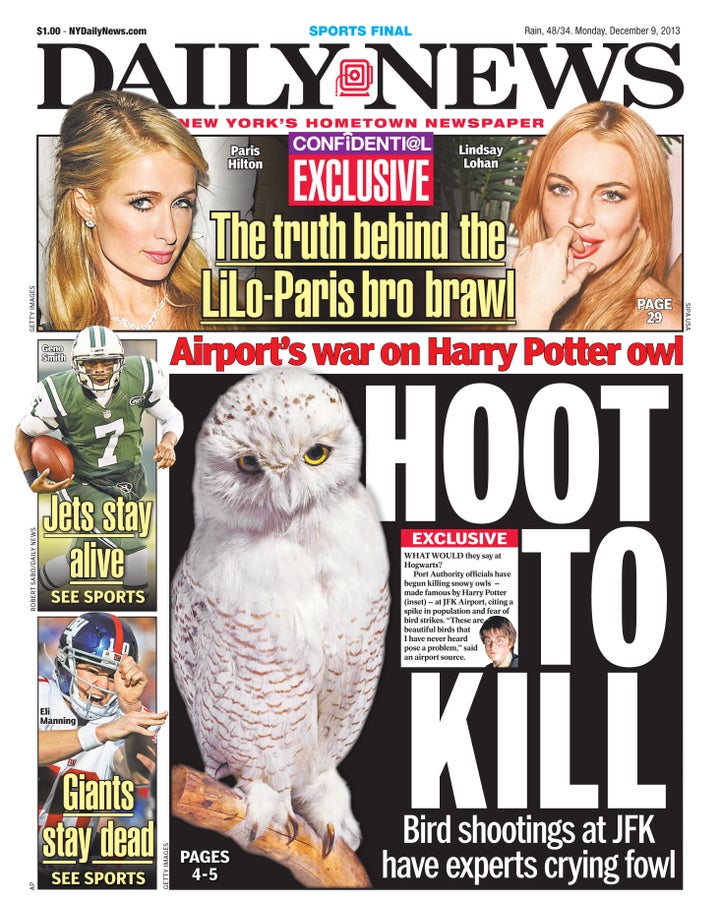Humans may have a new, nonviolent tool to prevent collisions between birds and aircraft.
Surrounding an airfield with a "sonic net" — meaning filling the area with a noise that interrupts bird communication — significantly reduced the number of nearby birds in a study led by Professor John Swaddle of the College of William and Mary’s Institute for Integrative Bird Behavior Studies. Birds don’t like their communication being interrupted, and so they avoid the area.

Ninety-seven percent of bird strikes occur during take-off or landing phases, so keeping birds away from airfields — the area that’s set aside for takeoff and landing — is key to preventing them.
“We have conducted prior research in an aviary but this is the first study done out in the field to show the efficacy of the sonic net,” Swaddle said in a news release. “We are using a different kind of deterrent — trying to stop birds from hearing one another by playing a noise that is at the same pitch as the alarm calls or predator noises they are listening out for.”
The researchers monitored the number of birds that landed at or flew over a military airfield near Newport News, Virginia, for four weeks before introducing a large outdoor speaker and amplifier, which played acoustic noise for 24 hours a day. The noise played at about the same volume as a noisy restaurant, according to the release.
After they started broadcasting the noise, they recorded a reduction of the number of bird numbers by 82 percent over a period of another four weeks in the area considered within the “sonic net” — meaning the area where the sound pressure level was greater than 80 decibels. In the “mid-noise” area — the adjacent area where sound pressure level was between 65 and 80 decibels -- bird numbers dropped by 65 percent.
Researchers also monitored bird levels in nearby areas to make sure that other factors, like weather, weren't throwing off their results, Swaddle told The Huffington Post in an email.

Researchers will soon be testing the technology at commercial airports.
"Our research team at William & Mary is working with a commercial partner — Midstream Technology — to install the sonic net technology at a couple of airports and those negotiations are ongoing," Swaddle said. "We hope to put together a long-term trial at an airport in the very near future.
Airplane collisions with wildlife — the vast majority of which involved birds — led to 25 human deaths and and 279 human injuries between 1990 and 2013, according to the FAA.
This week, four people in Alaska died in a plane crash caused when their plane hit a bald eagle.
And the FAA and the U.S. Department of Agriculture estimated in 2013 that damage and the value of lost flight time due to bird collisions averages $600 million a year, USA Today reported at the time.
But efforts to decrease the numbers of birds around airports are a minefield of controversy, since few people want to see birds killed, but officials often claim lethal means are necessary. New York City authorities routinely slaughter hundreds of geese in the name of airline safety, inciting outrage from bird lovers and animal advocates. And in January, a U.S. court upheld the legal right for authorities in New York and New Jersey to kill nearly any bird on their property that they deem necessary, despite public outcry.
Aviation officials often argue that nonlethal deterrents just aren’t effective, since birds just get used to things like fireworks and loud sounds when they realize there’s no real threat, according to USA Today. But Swaddle says that's unlikely to happen with sonic net technology, because sonic net technology does provide a real threat by masking the birds' communication systems.
"Birds do habituate to many of the traditional 'scare' regimes (e.g., loud noises, predator sounds, fake hawks, alarm calls) because they are toothless — there’s no real threat and the birds, being pretty smart, learn and habituate to the cues," he said. "Our approach is totally different. We are using sound to stop birds from hearing predator sounds and alarm calls. We play sound at the same frequencies (pitch) that birds hear at, which masks any of the sounds they rely on hearing in nature. This makes the area affected by the sonic net extremely scary as there are real threats in the environment but they can’t hear them ... So the birds move away to an area where they can hear."
